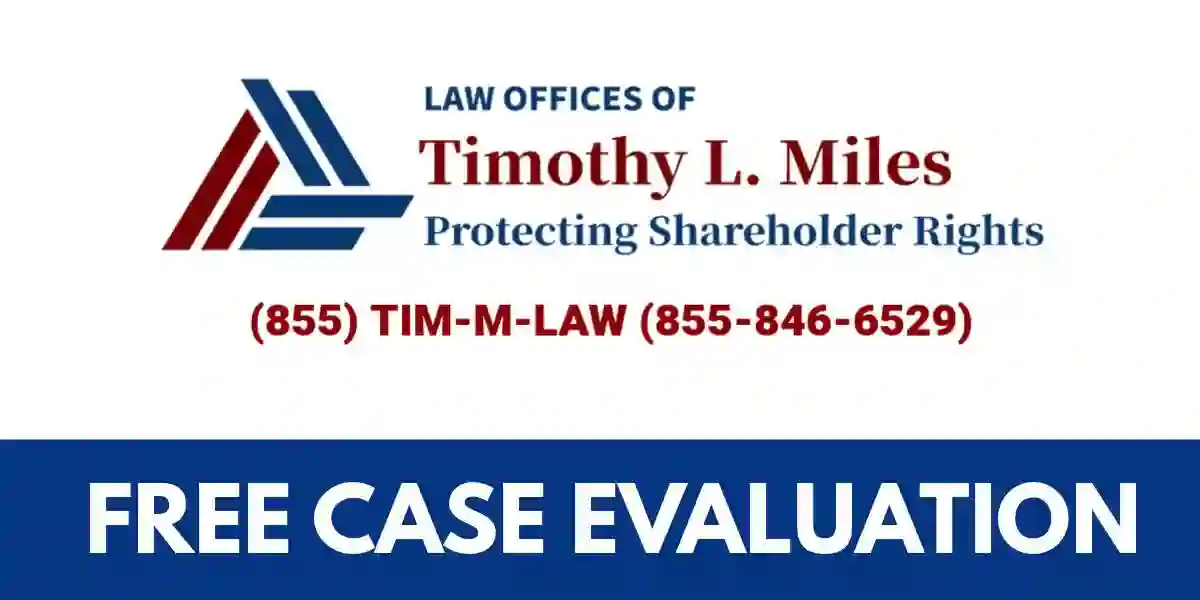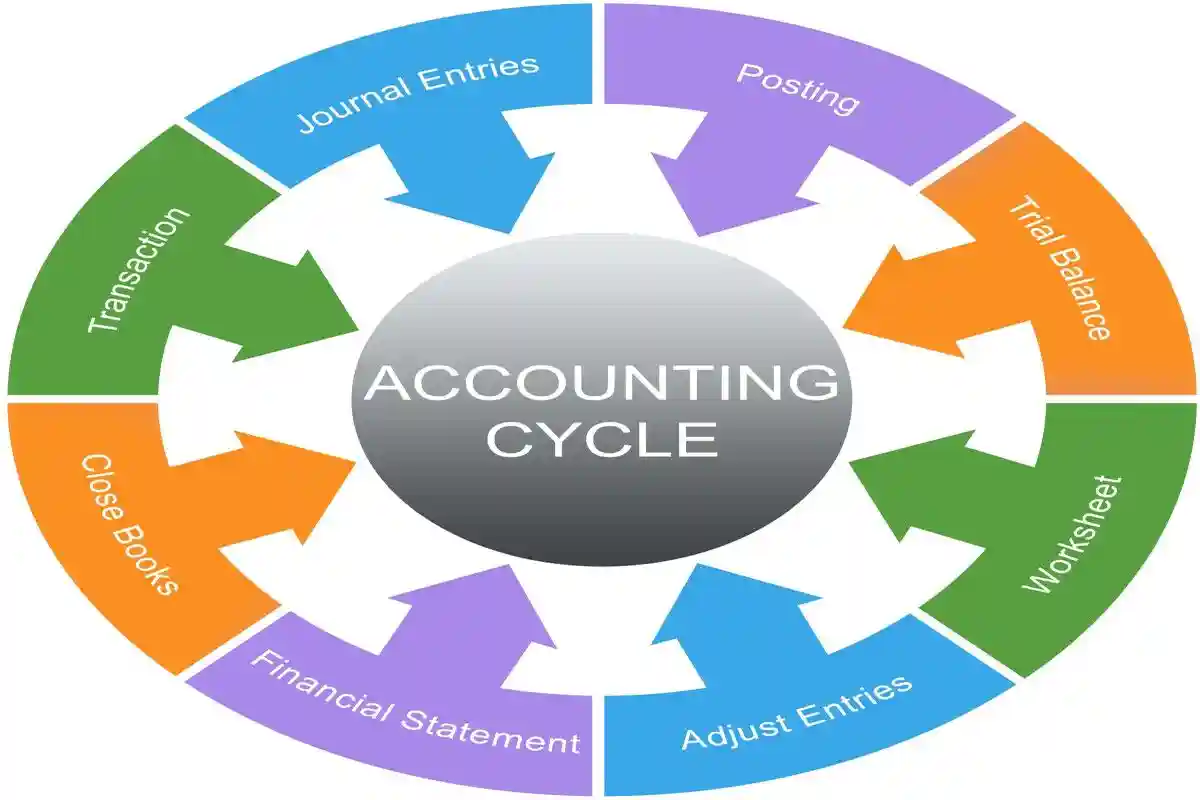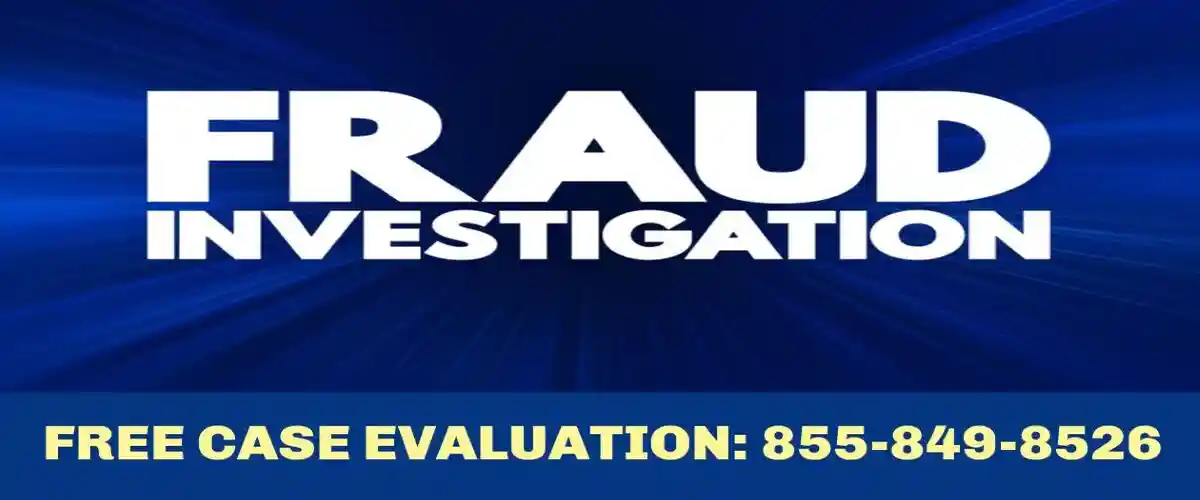Introduction to the WPP Class Action Lawsuit
- WPP Class Action Lawsuit: The WPP Class Action Lawsuit, Marty v. WPP plc, No. 25-cv-08365 (S.D.N.Y.), seeks to represent purchasers or acquirers of WPP plc (NYSE: WPP) common stock between February 27, 2025 and July 8, 2025, inclusive (the “Class Period”). This securities litigation case highlights critical concerns regarding corporate governance and internal controls at the cybersecurity company.
- Basis: The WPP Class Action Lawsuit alleges that WPP brands itself as a creative transformation company that provides communications, experience, commerce, and technology services. The WPP Class Action Lawsuit alleges that defendants throughout the Class Period created the false impression that they possessed reliable information pertaining to WPP’s projected revenue outlook and anticipated growth while also minimizing risk from seasonality and macroeconomic fluctuations. In truth, according to the complaint, WPP’s optimistic reports of its potential to achieve new client bid wins and retain its existing clientele fell short of reality as WPP’s media arm was not equipped to compete effectively and had begun to lose market share to its competitors.
- The WPP Class Action Lawsuit further alleges that on July 9, 2025, WPP published a trading update for the first half of 2025, alerting investors that WPP had allegedly “seen a deterioration in performance as Q2 has progressed,” attributing the deterioration to both “continued macro uncertainty weighing on client spend and weaker net new business than originally anticipated,” at least in part due to “some distraction to the business” as a result of the continued restructuring of WPP Media a.k.a. GroupM. The complaint also alleges that in a same-day press release, WPP further announced that CEO, defendant Mark Read, “will retire from the Board and as CEO on 31 December 2025.”
- Corrective Disclosure: On this news, the price of WPP stock fell more than 18%, according to the WPP Class Action Lawsuit.
- Lead Plaintiff Motion: Lead plaintiff motions for the WPP Class Action Lawsuit must be filed with the court no later than December 8, 2025. When a securities class action is filed, the Private Securities Litigation Reform Act (PSLRA) requires that within 20 days of the complaint filing, notice must be published informing shareholders of the pending litigation and their right to move the court to serve as lead plaintiff. This process ensures proper representation of shareholder interests in securities litigation cases.
PRE- AND POST-PSLRA STANDARDS FOR SECURITIES FRAUD LITIGATION
Feature | Pre-PSLRA Standard | Post-PSLRA Standard |
Motion to dismiss | Based on “notice pleading” (Federal Rule of Civil Procedure 8(a)), making it easier for plaintiffs to survive motions to dismiss. This often led to settlements to avoid costly litigation. | Requires satisfying PSLRA’s heightened pleading standards and the “plausibility” standard from Twombly and Iqbal. Failure to plead with particularity on any element can result in dismissal. |
Pleading | “Notice pleading” was generally sufficient, though fraud claims under Federal Rule of Civil Procedure 9(b) required particularity for the circumstances of fraud, but intent could be alleged generally. | Each misleading statement must be stated with particularity, explaining why it was misleading. Facts supporting beliefs in claims based on “information and belief” must also be stated with particularity. |
Scienter | Pleaded broadly; the “motive and opportunity” test was often sufficient to infer intent. | Requires alleging facts creating a “strong inference” of fraudulent intent, which must be at least as compelling as any opposing inference of non-fraudulent intent, as clarified in Tellabs, Inc. v. Makor Issues & Rights, Ltd.. |
Loss causation | Not a significant pleading hurdle, often assumed if a plaintiff bought at an inflated price. | Requires pleading facts showing the fraud caused the economic loss, often by linking a corrective disclosure to a stock price drop. Dura Pharmaceuticals, Inc. v. Broudo affirmed this. |
Discovery | Could proceed while a motion to dismiss was pending. | Automatically stayed during a motion to dismiss. |
Safe harbor for forward-looking statements | No statutory protection. | Protects certain forward-looking statements if accompanied by “meaningful cautionary statements”. |
Lead plaintiff selection | Often the first investor to file. | Court selects based on a “rebuttable presumption” that the investor with the largest financial interest is the most adequate. |
Liability standard | For non-knowing violations, liability was joint and several. | For non-knowing violations, liability is proportionate; joint and several liability applies only if a jury finds knowing violation. |
Mandatory sanctions | Available under Federal Rule of Civil Procedure 11, but judges were often reluctant to impose them. | Requires judges to review for abusive conduct |
Common Types of Securities Fraud
Common Financial Statement Fraud Schemes
| Scheme Type | Description | Example |
| Fictitious Revenue | Recording non-existent sales through false documentation and phantom customers | Creating counterfeit sales contracts or engaging in fraudulent bill-and-hold arrangements that lack economic substance |
| Premature Revenue Recognition | Recognizing revenue before satisfying essential accounting criteria | Accelerating revenue recognition before completing contracted service obligations or product delivery requirements |
| Channel Stuffing | Forcing excessive inventory into distribution channels to artificially inflate sales | Providing unusual incentives to distributors to accept unnecessary inventory levels that exceed reasonable demand |
| Asset Overstatement | Deliberately inflating reported asset values through accounting manipulation | Recording phantom inventory or applying inadequate depreciation to overstate asset carrying values |
| Liability Concealment | Hiding financial obligations through improper accounting treatments | Deliberately understating debt levels or warranty obligations through accounting manipulation |
| Material Omissions | Withholding critical information required for informed investment decisions | Failing to disclose significant related party transactions or contingent liabilities |
| Journal Entry Manipulation | Falsifying accounting records through improper manual adjustments | Making unsupported last-minute entries near reporting deadlines to manipulate results |
Misrepresentation of Financial Information: Companies may deliberately provide false or misleading financial statements to artificially inflate stock prices, often through:
Omissions of Material Facts: Securities fraud frequently involves failing to disclose critical information that reasonable investors would consider important in making investment decisions. This includes:
Insider Trading: Corporate executives may engage in unauthorized trading based on material non-public information, violating fundamental principles of market fairness and corporate governance. This can involve:
Consequences of Securities Fraud Like in the WPP Class Action Lawsuit
The repercussions of securities fraud extend far beyond immediate financial losses, impacting:
Companies found engaging in fraudulent practices often face:
THE SECURITIES LITIGATION PROCESS
| Filing the Complaint | A lead plaintiff files a lawsuit on behalf of similarly affected shareholders, detailing the allegations against the company. |
| Motion to Dismiss | Defendants typically file a motion to dismiss, arguing that the complaint lacks sufficient claims. |
| Discovery | If the motion to dismiss is denied, both parties gather evidence, documents, emails, and witness testimonies. This phase can be extensive. |
| Motion for Class Certification | Plaintiffs request that the court to certify the lawsuit as a class action. The court assesses factors like the number of plaintiffs, commonality of claims, typicality of claims, and the adequacy of the proposed class representation. |
| Summary Judgment and Trial | Once the class is certified, the parties may file motions for summary judgment. If the case is not settled, it proceeds to trial, which is rare for securities class actions. |
| Settlement Negotiations and Approval | Most cases are resolved through settlements, negotiated between the parties, often with the help of a mediator. The court must review and grant preliminary approval to ensure the settlement is fair, adequate, and reasonable. |
| Class Notice | If the court grants preliminary approval, notice of the settlement is sent to all class members, often by mail, informing them about the terms and how to file a claim. |
| Final Approval Hearing | The court conducts a final hearing to review any objections and grant final approval of the settlement. |
| Claims Administration and Distribution | A court-appointed claims administrator manages the process of sending notices, processing claims from eligible class members, and distributing the settlement funds. The distribution is typically on a pro-rata basis based on recognized losses. |
The Role of Regulatory Bodies in the WPP Class Action Lawsuit
Regulatory authorities, particularly the Securities and Exchange Commission (SEC), play a vital role in:
The SEC maintains broad investigative powers and can impose significant penalties, including:
Importance of Compliance
Maintaining robust compliance programs proves essential for:
Companies must prioritize:
Protecting Your Investments in the WPP Class Action Lawsuit
Investors must remain vigilant in safeguarding their investments through:
Effective protection strategies include:
Strategies for Investor Protection in the WPP Class Action Lawsuit
Here are comprehensive strategies investors should consider to protect their interests and navigate potential securities fraud:
Conduct Thorough Due Diligence in the WPP Class Action Lawsuit
Before making any investment decisions, shareholders must conduct extensive research focusing on:
- Comprehensive analysis of the company’s financial statements, paying special attention to revenue recognition practices and internal controls
- Detailed evaluation of management’s track record in maintaining strong corporate governance
- Assessment of the company’s regulatory compliance history and any past securities litigation
- Review of analyst reports and independent research highlighting potential red flags
- Examination of the company’s corporate governance structure, including board independence and audit committee effectiveness
Warning signs that warrant further investigation include:
- Frequent changes in executive leadership or board composition
- History of regulatory violations or securities litigation
- Weak or ineffective internal controls
- Inconsistent financial reporting patterns
- Unusual related-party transactions
Monitor Company Communications and Disclosures in the WPP Class Action Lawsuit
Maintaining vigilant oversight of company communications proves essential:
- Carefully review all SEC filings, particularly Forms 10-K, 10-Q, and 8-K
- Analyze earnings calls transcripts and management presentations
- Track company press releases and public statements
- Monitor regulatory investigations or enforcement actions
- Follow securities litigation developments affecting the company
Pay particular attention to:
- Changes in accounting policies or practices
- Modifications to internal controls
- Corporate governance updates
- Management’s discussion of operational challenges
- Disclosure of material risks or uncertainties
Implement Portfolio Diversification Strategies in the WPP Class Action Lawsuit
Effective diversification remains crucial for risk management:
- Spread investments across multiple sectors and industries
- Balance holdings between growth and value stocks
- Consider geographic diversification
- Maintain appropriate position sizes
- Regular portfolio rebalancing
Key diversification principles include:
- Avoiding over-concentration in single companies
- Understanding sector-specific risks
- Monitoring correlation between holdings
- Maintaining liquidity reserves
- Regular risk assessment and rebalancing
SPLIT AMOUNG CIRCUITS IN PLEADING A STRONG INFERENCE OF SCIENCE
Circuit | Summary of Pleading Standard | Key Cases | Notes and Circuit Splits |
| First Circuit | Requires strong inferenceof scienter under PSLRA standards. Accepts allegations of motive and opportunity combined with strong circumstantial evidence. | Greenberg v. Crossroads Systems(2020); In re Biogen Securities Litigation(2019) | Aligns with majority circuits requiring “strong inference” but more lenient on motive and opportunity allegations than some circuits. |
| Second Circuit | Applies “strong inference”standard with emphasis on holistic analysis. Requires inference of scienter to be at least as compelling as any opposing inference. | Tellabs, Inc. v. Makor Issues & Rights (2007); ATSI Communications v. Shaar Fund (2021) | Leading circuiton scienter interpretation post-Tellabs. Emphasizes comparative plausibility of inferences. |
| Third Circuit | Follows Tellabsstandard requiring strong inference that is cogent and compelling. Accepts core operations doctrine in limited circumstances. | In re Hertz Global Holdings Securities Litigation (2020); City of Edinburgh Council v. Pfizer (2014) | Circuit split on core operations doctrine – more restrictive than some circuits but accepts it in narrow circumstances. |
| Fourth Circuit | Requires “strong inference”with particular emphasis on contemporaneous evidence. Skeptical of pure motive and opportunity allegations. | Teachers’ Retirement System v. Hunter(2019); Cozzarelli v. Inspire Pharmaceuticals(2008) | More demanding standard for motive and opportunityallegations compared to First and Ninth Circuits. |
| Fifth rcuit | Applies strict “strong inference”standard. Requires particularized factssuggesting deliberate recklessness or actual knowledge. | ABC Arbitrage Plaintiffs Group v. Tchuruk(2002); Rosenzweig v. Azurix Corp.(2003) | Most restrictive circuiton scienter pleading. Rarely accepts motive and opportunity alone. |
| Sixth Circuit | Follows Tellabs with moderate application. Accepts core operations doctrineand strong circumstantial evidence. | In re Omnicare Securities Litigation (2014); Helwig v. Vencor (2001) | Middle ground approach – less restrictive than Fifth Circuit but more demanding than Ninth Circuit. |
| Seventh Circuit | Home of Tellabs decision. Requires holistic analysis where inference of scienter must be at least as compellingas competing inferences. | Tellabs, Inc. v. Makor Issues & Rights (2007); Higginbotham v. Baxter International (2007) | Authoritative circuitpost-Tellabs. Emphasizes comparative plausibility standard. |
| Eighth Circuit | Applies “strong inference”standard with acceptance of core operations doctrine. Moderate approach to motive and opportunity. | In re K-tel International Securities Litigation (2002); In re Navarre Corp. Securities Litigation (2002) | Generally, follows mainstream approach without significant departures from other circuits. |
| Ninth Circuit | Most lenient circuiton scienter pleading. Readily accepts motive and opportunityallegations and core operations doctrine. | In re Oracle Corp. Securities Litigation(2010); Zucco Partners v. Digimarc Corp.(2009) | Major circuit split- significantly more plaintiff-friendly than Fifth, Second, and Fourth Circuits. |
| Tenth Circuit | Requires “strong inference” with emphasis on deliberate recklessness. Moderate acceptance of circumstantial evidence. | City of Philadelphia v. Fleming Cos. (2001); Adams v. Kinder-Morgan (2003) | Follows mainstream approach similar to Sixth and Eighth Circuits. |
| Eleventh Circuit | Applies strict “strong inference” standard. Requires particularized allegations of actual knowledge or deliberate recklessness. | Bryant v. Avado Brands (1999); In re Stac Electronics Securities Litigation (1999) | Restrictive approachsimilar to Fifth Circuit. Skeptical of pure motive and opportunity theories. |
| D.C. Circuit | Follows Tellabs standard with rigorous analysis. Emphasizes need for contemporaneous evidence of scienter. | Jaffee v. Crane Co. (2016); Longman v. Food Lion (1999) | Sophisticated analysis reflecting complex securities cases. Generally restrictive but fact-specific. |
| Federal Circuit | Limited securities jurisdiction. When applicable, follows Tellabs standard with emphasis on technical complexity considerations. | In re Seagate Technology Securities Litigation (2008) | Rarely handles securities cases. Defers to regional circuits on most scienter issues. |
The Lead Plaintiff Deadline in the WPP Class Action Lawsuit
- Lead plaintiff motions for the WPP Class Action Lawsuit must be filed with the court no later than December 8, 2025.
- This securities litigation alleges that the company made misleading statements about its internal controls and financial condition during the Class Period.
- When a securities class action is filed, shareholders have important rights and deadlines to be aware of:
The Eligibility Criteria for Lead Plaintiff Appointment in the WPP Class Action Lawsuit
- To be eligible for appointment as the lead plaintiff in the WPP Class Action Lawsuit, an investor must meet several key criteria established under securities laws to protect shareholder interests:
- The investor must have purchased WPP stock during the Class Period
- The investor must have suffered financial losses related to their investment
- The investor must be willing to represent the interests of all class members
- The investor must have significant financial interest in the litigation outcome
- The investor must meet certain legal requirements for serving as lead plaintiff
- It is crucial to note that both domestic and international investors who meet these criteria are eligible to seek appointment as the lead plaintiff in the class action lawsuit, as courts have consistently recognized the rights of non-U.S. investors in securities litigation. The lead plaintiff plays a vital role in overseeing the WPP Class Action Lawsuit and protecting shareholder interests through proper corporate governance.
PHASES OF THE WPP CLASS ACTION LAWSUIT
| Phase | Description |
| Mediation/Negotiation | Before a settlement is finalized, the plaintiff’s attorneys and the defendants’ legal teams typically engage in extensive negotiations, often with a neutral, third-party mediator, to agree on the terms of a potential settlement that addresses internal controls deficiencies. |
| Preliminary court approval | After reaching a settlement agreement, the parties must submit it to the court for preliminary approval. The court carefully reviews the fairness of the proposed terms, including corporate governance reforms, before proceeding. |
| Notice to class members | Following preliminary approval, a detailed court-approved notice is distributed to all potential class members, outlining the settlement terms, eligibility requirements, and the proposed plan for allocating damages. |
| Claims administration | A court-appointed administrator manages the settlement fund and claims process. Class members must submit documentation proving their losses to receive compensation. |
| Final court approval | After processing claims and meeting notice requirements, the court holds a final hearing to ensure the settlement is fair and reasonable for the entire class. |
| Distribution of funds | Upon final approval, the claims administrator distributes settlement funds to eligible claimants proportionally based on their recognized losses. Multiple distribution rounds may occur. |
| Case termination | The securities litigation concludes after complete distribution of the settlement funds and implementation of any required corporate governance reforms. |
What Is the Securities Act of 1934?
- The Securities Exchange Act of 1934 represents cornerstone legislation enacted to regulate securities markets and protect investors through requirements for internal controls and corporate governance standards. This law provides the foundation for many modern securities litigation claims involving misleading statements about company operations and financial condition.
- Overall, the Securities Act of 1934 plays a pivotal role in maintaining market integrity and investor confidence through robust internal controls and corporate governance requirements. The Act establishes comprehensive frameworks for securities litigation and regulatory enforcement actions when companies make misleading statements or fail to maintain adequate controls. These provisions help ensure transparency and accountability in financial markets while protecting shareholder interests through various enforcement mechanisms.
What Damages Am I Entitled in the WPP Class Action Lawsuit
- In securities class action lawsuits like the WPP Class Action Lawsuit, plaintiff damages are typically calculated based on out-of-pocket losses resulting from alleged misstatements or omissions about internal controls and corporate governance practices.
- These calculations consider factors like the artificial inflation in stock price during the Class Period and the subsequent price declines when the truth is revealed through corrective disclosures. Expert analysis helps quantify damages by examining market efficiency and loss causation.
Investor Rights in the WPP Class Action Lawsuit
- Investors impacted by the WPP Class Action Lawsuit have specific legal rights established under securities laws to protect shareholder interests. These rights include the ability to seek appointment as lead plaintiff, participate as a class member, object to settlement terms, opt out of the class, and submit claims for damages. Understanding these rights is essential for shareholders evaluating their options for pursuing recovery through securities litigation.
- Investors who suffered losses related to the WPP Class Action Lawsuit can pursue several strategic options based on their specific circumstances and objectives. They may choose to: 1) actively participate by seeking lead plaintiff appointment, 2) remain passive class members, 3) opt out and pursue individual claims, or 4) object to settlement terms. Each option carries distinct advantages and considerations regarding control, timing, and potential recovery.
The Class Period in the WPP Class Action Lawsuit
In a securities class action, such as the WPP Class Action Lawsuit class action lawsuit:
- The class period refers to the specific time frame during which the alleged fraudulent activity occurred. It is the period in which the plaintiffs claim to have suffered financial losses due to misrepresentations or omissions made by the defendants.
- The class period is crucial in determining who can be included in the class and seek damages.
- It typically starts when the alleged fraud was first publicly disclosed or when investors should have reasonably become aware of it.
- The class period usually ends when the alleged fraud is revealed to the public or when the plaintiffs file a lawsuit.
- The length of the class period can vary depending on the specific circumstances of each case.
CIRCUIT COURT STANDARDS FOR PLEADING LOSS CAUSATION IN SECURITIES CLASS ACTION LAWSUITS
| Circuit | Summary of pleading standard | Key cases | Notes and circuit splits |
| First Circuit | Applies a relatively lenient standard under Rule 8(a), requiring only plausible allegations that connect the corrective disclosure to the preceding misrepresentation. | Massachusetts Retirement Systems v. CVS Caremark Corp. (2013). | Stands with circuits requiring only “plausible” allegations rather than particularity. |
| Second Circuit | Requires plaintiffs to allege that the subject of the fraudulent statement was the cause of the actual loss suffered. Does not require particularized pleading. | Lentell v. Merrill Lynch & Co. (2005); Emergent Capital Inv. Mgmt., LLC v. Stonepath Grp., Inc. (2003). | Focuses on “zone of risk” analysis and requires that the misstatement concerns the very facts that caused the loss. |
| Third Circuit | Follows a moderate approach under Rule 8(a), requiring a causal connection between the misrepresentation and the loss that is more than merely possible or speculative. | McCabe v. Ernst & Young, LLP (2007); EP Medsystems, Inc. v. EchoCath, Inc. (2000). | Requires plaintiffs to demonstrate that the revelation of fraudulent information was a “substantial factor” in causing the decline in stock value. |
| Fourth Circuit | Applies the heightened Rule 9(b) pleading standard to loss causation, requiring plaintiffs to plead with particularity how the corrective disclosure relates to the prior misrepresentation. | Katyle v. Penn National Gaming, Inc. (2011); Teachers’ Ret. Sys. of LA v. Hunter (2007). | Stands with the Seventh and Ninth Circuits in requiring particularized pleading of loss causation. |
| Fifth Circuit | Requires that plaintiffs allege both that the corrective disclosure specifically revealed the fraud and that the revelation of the fraud caused the loss. | Pub. Emps. Ret. Sys. of Miss. v. Amedisys, Inc. (2014); Lormand v. US Unwired, Inc. (2009). | Particularly stringent about the connection between corrective disclosure and prior misrepresentation. |
| Sixth Circuit | Follows a moderate approach, requiring plaintiffs to demonstrate a causal connection between the misrepresentation and the loss, but not requiring the heightened particularity of Rule 9(b). | Ohio Pub. Emps. Ret. Sys. v. Federal Home Loan Mortgage Corp. (2016); IBEW Local 58 v. Royal Bank of Scotland (2013). | Focuses on whether the disclosure revealed “some aspect” of the prior misrepresentation. |
| Seventh Circuit | Applies the heightened Rule 9(b) pleading standard to all elements of securities fraud, including loss causation. | Tricontinental Industries v. PricewaterhouseCoopers (2007); Ray v. Citigroup Global Markets (2007). | Stands with the Fourth and Ninth Circuits in requiring particularized pleading of loss causation. |
| Eighth Circuit | Applies a relatively lenient standard, requiring only that the complaint provide the defendant with notice of the plaintiff’s claim that the misrepresentation caused the loss. | In re Cerner Corp. Sec. Litig. (2005); Schaaf v. Residential Funding Corp. (2008). | Tends to analyze loss causation under the more permissive Rule 8(a) standard. |
| Ninth Circuit | Applies the heightened Rule 9(b) pleading standard to all elements of securities fraud, including loss causation. | Oregon Public Employees Retirement Fund v. Apollo Group Inc. (2014); Metzler Inv. GMBH v. Corinthian Colleges, Inc. (2008). | Previously inconsistent but firmly established Rule 9(b) standard in Oregon Public Employees v. Apollo (2014). |
| Tenth Circuit | Applies a moderate approach that requires a logical link between the misrepresentation and the economic loss, but does not explicitly require Rule 9(b) particularity. | In re Williams Sec. Litig. (2007); Nakkhumpun v. Taylor (2015). | Focuses on whether the disclosure revealed “some aspect” of the prior misrepresentation. |
| Eleventh Circuit | Requires plaintiffs to plead that the misrepresentation was the “substantial or significant contributing factor” in the loss, but generally follows Rule 8(a). | Hubbard v. BankAtlantic Bancorp, Inc. (2012); FindWhat Investor Group v. FindWhat.com (2011). | Emphasizes proximate causation principles in loss causation analysis. |
| D.C. Circuit | Has limited securities fraud jurisprudence but generally follows a more lenient approach aligned with Rule 8(a). | Plumbers & Steamfitters Local 773 Pension Fund v. Danske Bank (2020). | Generally follows the Supreme Court’s guidance in Dura Pharmaceuticals without imposing heightened pleading requirements. |
Pleading Materiality in the WPP Class Action Lawsuit
- The PSLRA introduces heightened pleading standards in securities class action lawsuits, requiring plaintiffs to meet more rigorous requirements in their initial complaints. This includes the requirement to plead with particularity each statement alleged to be misleading and the reasons why those statements are misleading.
- For statements based on information and belief, plaintiffs must state with particularity all facts on which that belief is formed. Additionally, plaintiffs must plead and prove that the alleged misconduct caused the purported loss. The Supreme Court has clarified that a plaintiff must allege that the stock price fell after the truth of the fraud became known.
- Materiality is a crucial concept in securities litigation, as it determines the significance of information to a reasonable investor. Under the PSLRA, a plaintiff must prove that the alleged misrepresentation or omission was material, meaning it would have been important to a reasonable investor in making their investment decisions.
- The legal framework for materiality is defined and regulated by the federal securities laws, particularly the Securities Exchange Act of 1934, which imposes a duty on companies to disclose all material information to their investors.
- Different parties involved in securities litigation may have varying perspectives on materiality. Plaintiffs must establish materiality to prove that the defendant’s actions or omissions had a direct impact on their investment decisions, while defendants may argue that the information was immaterial.
- The legal standard for materiality is based on the context in which the alleged misrepresentation or omission occurred and whether a reasonable investor would have considered it significant.
- The PSLRA’s materiality standard is significant in securities litigation, as it helps to prevent frivolous lawsuits and ensures that only genuine claims are brought against companies. The act’s heightened pleading standards and materiality requirement are designed to protect investors and prevent the abuse of the securities litigation
Other Statutory Provisions
- Early notice to class members. Within 20 days of filing the complaint, the plaintiff must publish notice advising class members of the pendency of the action, the claims asserted, the purported class period, and that any class member may move the court to serve as lead plaintiff. 15 U.S.C. §§ 77z-1(a)(3)(A), 78u-4(a)(3)(A).
- Motion for appointment as lead plaintiff. Within 60 days after publication of the notice to class members, any member of the class may move the court to become lead plaintiff. 15 U.S.C. §§ 77z-1(a)(3)(A)(i)(II), 78u-4(a)(3)(A)(i)(II).
- Court appointment of lead plaintiff. Within 90 days after publication of the notice to class members, the court shall consider any motions for lead plaintiff and appoint as lead plaintiff the member(s) of the purported plaintiff class that the court determines to be most capable of adequately representing the interests of class members. 15 U.S.C. §§ 77z-1(a)(3)(B)(i), 78u-4(a)(3)(B)(i).
- Lead Plaintiff’s Recovery: The PSLRA provides that the lead plaintiff’s recovery is limited to their pro rata share of the final judgment or settlement awarded to all other members of the class. 15U.S.C. §§ 77z-1(a)(4), 78u-4(a)(4). This provision does not limit lead plaintiff’s recovery of an award of reasonable costs
and expenses (including lost wages) directly relating to the representation of the class.
Detailed Summary Table Outlining the Economic, Operational,
And Legal Frameworks for Securities Class Actions
| Category | Key Elements | Practical Implications | Recent Developments | |
| Economic | ||||
| Corporate Financial Impact | • Legal fees and defense costs • Settlement payments • Penalties and fines • Remediation expenses | • Direct reduction in profitability • Potential stock price decline • Impact on shareholder value • Financial statement disclosures | • Average settlement amounts increased 15% in 2023 • Defense costs typically range from $2-8M per case | |
| Operational Disruption | • Management distraction • Document production burden • Internal investigation requirements • Testimony preparation | • Reduced focus on core business • Resource reallocation • Strategic initiative delays • Compliance program overhauls | • Companies now spend average of 1,200+ hours on litigation response • 68% of executives report significant operational impact | |
| Investor Recovery Mechanism | • Class action procedures • Out-of-pocket damages • Lead plaintiff selection • Claims administration | • Financial loss compensation • Transaction-based calculations • Pro-rata distribution • Claims filing requirements | • Recovery rates average 2-3% of investor losses • Institutional investors recover higher percentages | |
| Market Confidence Effects | • Transparency enhancement • Accountability mechanisms • Governance improvements • Disclosure quality | • Investor trust restoration • Market participation incentives • Capital formation support • Information reliability | • Post-litigation governance reforms implemented in 72% of settled cases • Measurable improvements in disclosure quality | |
| Current Trends | ||||
| Individual Accountability Focus | • Officer and director liability • Personal financial consequences • Clawback provisions • D&O insurance implications | • Executive behavior modification • Personal risk assessment • Compliance prioritization • Leadership accountability | • 64% increase in named individual defendants • Personal contributions to settlements up 28% | |
| Technology-Enhanced Detection | • AI-powered surveillance • Advanced analytics • Pattern recognition • Anomaly detection | • Increased violation detection • Stronger evidence collection • More sophisticated cases • Higher success rates | • SEC using machine learning to identify disclosure anomalies • 42% of new cases involve technology-detected violations | |
| Litigation Process Modernization | • E-discovery platforms • Digital evidence management • Virtual proceedings • Automated document review | • Faster case processing • Cost efficiency improvements • Enhanced evidence organization • Remote participation | • 87% reduction in document review time • 35% decrease in litigation costs through technology | |
| Cross-Border Complexity | • Jurisdictional challenges • Regulatory differences • Enforcement coordination • International evidence gathering | • Multi-jurisdiction compliance • Global risk assessment • Harmonized defense strategies • International settlement considerations | • 38% of securities cases now involve cross-border elements • International regulatory cooperation agreements expanded | |
| Legal Frameworks | ||||
| Pleading Standards | • PSLRA requirements • Scienter (intent) showing • Particularity in allegations • Strong inference threshold | • Higher dismissal rates • Front-loaded case investment • Detailed complaint preparation • Expert involvement earlier | • Macquarie Infrastructure Corp. v. Moab Partners (2024) reshaped omission standards • Motion to dismiss success rate at 47% | |
| Loss Causation Elements | • Corrective disclosure • Price impact evidence • Economic analysis • Event studies | • Causal chain demonstration • Market efficiency proof • Expert testimony requirements • Damages limitation | • Dura Pharmaceuticals v. Broudo remains controlling precedent • Increasing sophistication in economic analyses | |
| Damages Calculation | • Out-of-pocket methodology • Inflation per share • 90-day lookback period • Transaction-based approach | • Expert-driven calculations • Trading pattern importance • Holding period considerations • Proportional recovery | • Forensic accounting techniques increasingly sophisticated • Competing damages models in 92% of cases | |
| Class Certification | • Commonality requirements • Typicality standards • Adequacy of representation • Predominance of common issues | • Class definition strategies • Lead plaintiff selection • Institutional investor preference • Certification challenges | • Institutional investors serve as lead plaintiffs in 58% of cases • Class certification contested in 94% of cases | |
| Investor Considerations | ||||
| Participation Decision Factors | • Loss threshold assessment • Lead plaintiff potential • Litigation timeline • Cost-benefit analysis | • Active vs. passive participation • Resource commitment evaluation • Recovery expectations • Reputational considerations | • Minimum loss threshold for lead plaintiff typically $100K+ • Average case duration now 3.2 years | |
| Recovery Optimization | • Claims filing procedures • Documentation requirements • Deadline adherence • Distribution mechanics | • Proof of transaction needs • Claims administrator interaction • Recovery maximization strategies • Tax implications | • Only 35% of eligible investors file claims • Electronic claim filing now standard | |
| Governance Implications | • Board oversight duties • Disclosure controls • Risk management systems • Compliance programs | • Director liability concerns • Committee responsibilities • Reporting procedures • Documentation practices | • Board-level disclosure committees now present in 78% of public companies • Director education programs expanded | |
| Future Participation Rights | • Opt-out considerations • Individual action potential • Settlement objection rights • Appeal possibilities | • Strategic participation choices • Large loss alternative approaches • Settlement evaluation • Ongoing case monitoring | • Opt-out actions by large investors increased 47% • Settlement objections successful in only 3% of cases |
Gathering and Organizing Relevant Evidence in the WPP Class Action Lawsuit
- In a securities class action lawsuit like the WPP Class Action Lawsuit, evidence is the cornerstone of building a compelling case. For affected shareholders, gathering and organizing all relevant financial and investment documentation is a crucial first step.
- The evidence will help substantiate claims of corporate misconduct and demonstrate the financial harm you may have suffered.
What documents do you need?
- Company documents: Gather all press releases, financial statements (like 10-K and 10-Q reports), and analyst reports related to Molina Healthcare that you have.
- Your investment history: Meticulously document your investment history with Molina Healthcare, including:
- Dates of all stock purchases and sales
- The quantities of shares bought or sold
- The prices of each transaction
- Communications: Compile any emails or other communications that shed light on the alleged wrongdoing.
- Brokerage records: Collect all relevant brokerage statements and confirmation slips.
How to organize your records in the WPP Class Action Lawsuit
- Start a file: Create a comprehensive file of all relevant documents.
- Categorize and date: Organize your documents by type and date. This will help your legal counsel easily retrieve and review information.
- Digital copies: If possible, keep digital copies of all documents in a secure location.
Staying Informed: Monitoring Case Developments
- In a securities class action lawsuit, keeping up with case developments is crucial for shareholders. As the WPP Class Action Lawsuit moves forward, new information can significantly impact the strategy and potential outcomes.
- Here’s how to stay informed and well-positioned throughout the process:
Rely on communication with your legal team
- Understanding the implications of new information, such as court rulings.
Follow news and market developments in the WPP Class Action Lawsuit
- Gain insights into market trends related to WPP Class Action Lawsuit.
Knowledge is power
Rights of Investors in the WPP Class Action Lawsuit
Investors affected by the WPP Class Action Lawsuit possess specific rights that they can exercise. Understanding these rights is vital for anyone considering involvement in the lawsuit.
Right to Information in the WPP Class Action Lawsuit
- Investors have the right to receive accurate and timely updates regarding the WPP Class Action Lawsuit.
- This includes information on the case’s progress, potential settlements, and any necessary actions they may need to undertake.
Right to Participate in the WPP Class Action Lawsuit
- Affected investors have the right to join the WPP Class Action Lawsuit.
- This allows them to collaborate with other investors in seeking compensation for their losses without the burden of filing individual lawsuits.
Right to Legal Representation in the WPP Class Action Lawsuit
- Investors can seek legal counsel to navigate the complexities of the WPP Class Action Lawsuit.
- Legal professionals can provide guidance and support throughout the process.
- If you suffered substantial losses and wish to serve as lead plaintiff of the WPP Class Action Lawsuit,or just have general questions about you rights as a shareholder, please contact attorney Timothy L. Miles of the Law Offices of Timothy L. Miles, at no cost, by calling 855/846-6529 or via e-mail at [email protected].
Options for Investors in the aTyr Pharma class action lawsuit
Investors facing losses due to the WPP Class Action Lawsuit have several options available to them. Each option carries its own implications and potential outcomes.
Joining the Class Action
- One of the most straightforward options for investors is to join the WPP Class Action Lawsuit.
- By doing so, they can collectively pursue compensation for their losses without the need for individual litigation.
Filing an Individual Claim
- In certain situations, investors may opt to file individual claims instead of joining the WPP Class Action Lawsuit.
- This option may be appropriate for those who believe their losses are significant enough to warrant separate legal action.
Seeking Legal Advice
- Consulting with a legal professional experienced in securities law can provide investors with insights into their best course of action.
- Legal experts can help assess the merits of individual claims versus joining the WPP Class Action Lawsuit.
The Role of Law Firms in the aTyr Pharma class action lawsuit
- Law firms play a crucial role in the WPP Class Action Lawsuit.
- They provide the necessary legal experience and representation for investors seeking to recover their losses.
Selecting a Law Firm in the aTyr Pharma class action lawsuit
- Investors have the option to choose a law firm that practices securities fraud cases.
- A reputable firm can offer valuable insights and increase the likelihood of a favorable outcome.
- If you suffered substantial losses and wish to serve as lead plaintiff of the WPP Class Action Lawsuit, or just have general questions about you rights as a shareholder, please contact attorney Timothy L. Miles of the Law Offices of Timothy L. Miles, at no cost, by calling 855/846-6529 or via e-mail at [email protected].
Frequently Asked Questions About the WPP Class Action Lawsuit
What initiated the WPP class action lawsuit?
The WPP class action lawsuit was initiated by investors alleging that Molina Healthcare provided misleading information regarding its financial health and operations, resulting in financial losses.
How can I join the WPP class action lawsuit?
If you purchased shares during the class period and suffered a loss, then you are automatically a member of the WPP class action lawsuit and do not need to do anything at this point unless you are considering moving for lead plaintiff.
What are the potential benefits of a WPP class action lawsuit?
Class action lawsuits like the WPP class action lawsuit allow individual investors to collectively seek justice and compensation, which might be challenging to pursue individually. They also promote corporate accountability.
How long will the WPP class action lawsuit take to resolve?
The duration of class action lawsuits can vary significantly, depending on the complexity of the case, legal strategies, and whether settlements are reached. It could take several months to years to resolve the WPP lawsuits.
Contact Timothy L. Miles Today About a WPP Class Action Lawsuit
The most important thing you need to know is you can call me at no charge if you wish to serve as lead plaintiff of the WPP class action lawsuit, or just have general questions about you rights as a shareholder, please contact attorney Timothy L. Miles of the Law Offices of Timothy L. Miles, at no cost, by calling 855/846-6529 or via e-mail at [email protected]. (24/7/365).
Timothy L. Miles, Esq.
Law Offices of Timothy L. Miles
Tapestry at Brentwood Town Center
300 Centerview Dr. #247
Mailbox #1091
Brentwood,TN 37027
Phone: (855) Tim-MLaw (855-846-6529)
Email: [email protected]
Website: www.classactionlawyertn.com
Facebook Linkedin Pinterest youtube
Visit Our Extensive Investor Hub: Learning for Informed Investors










